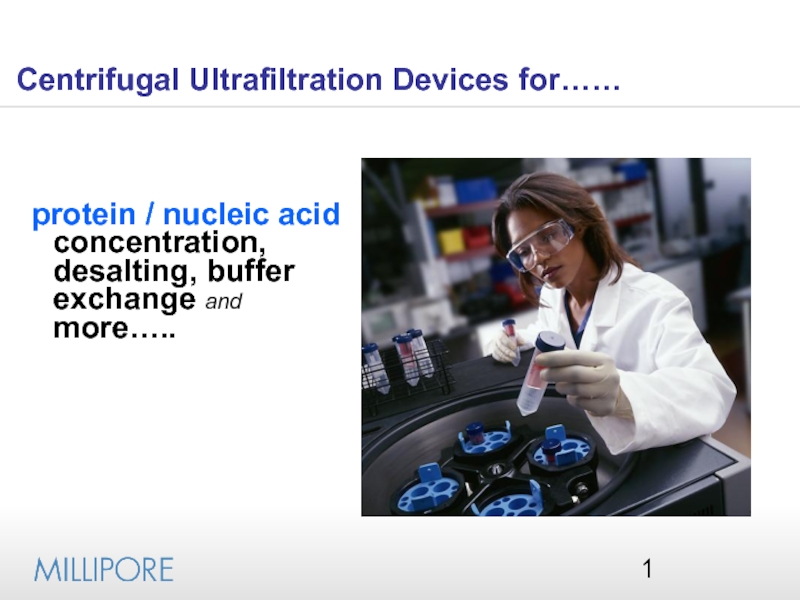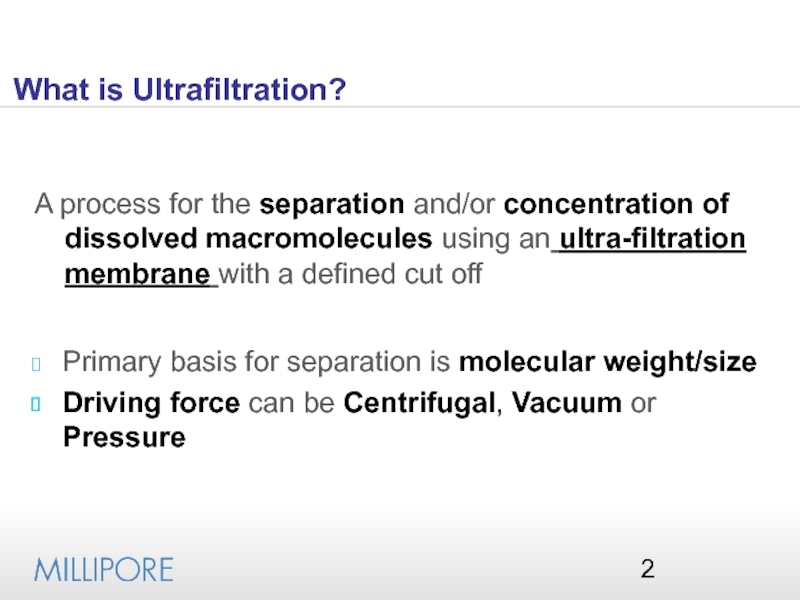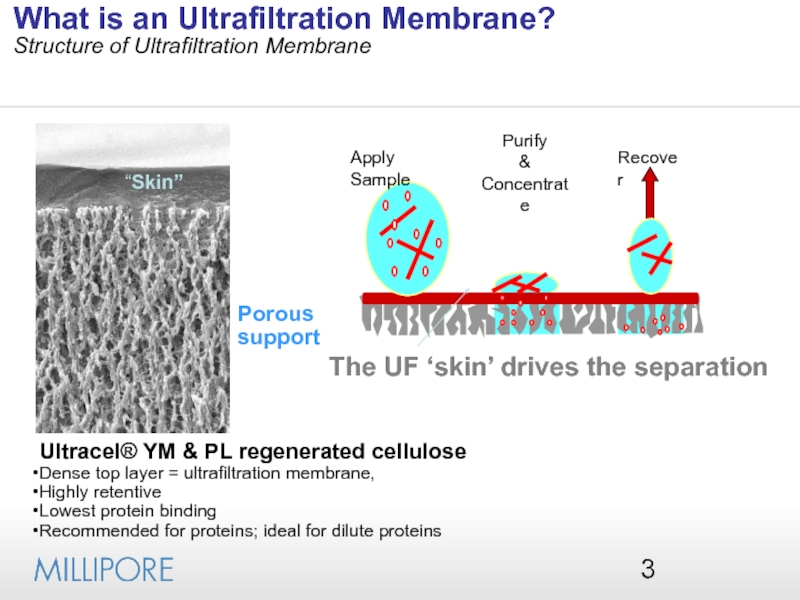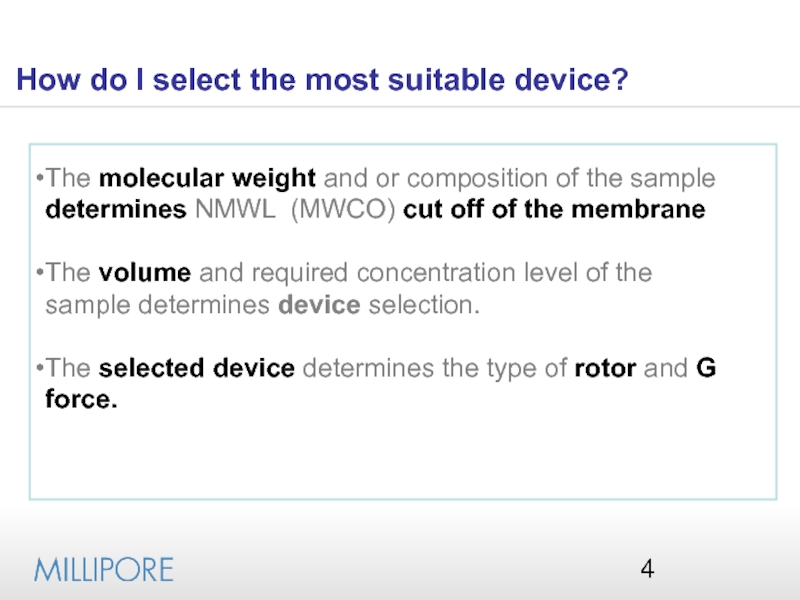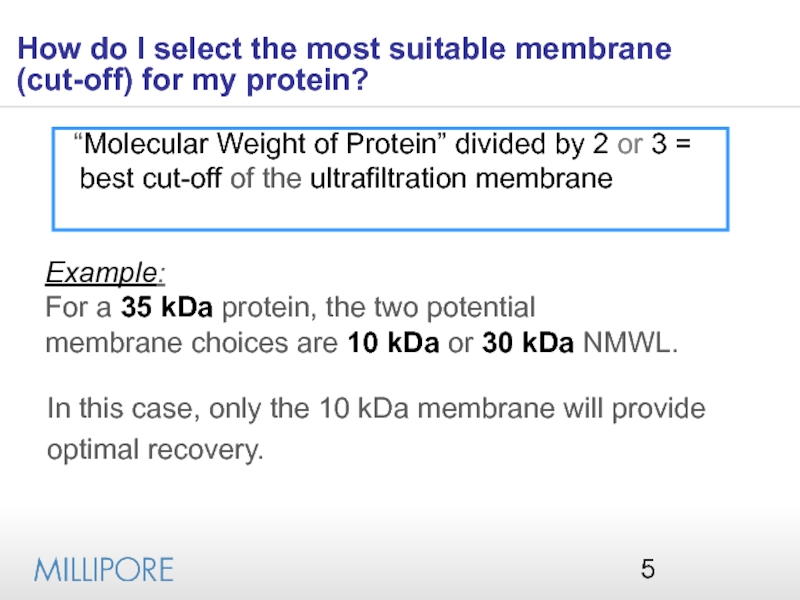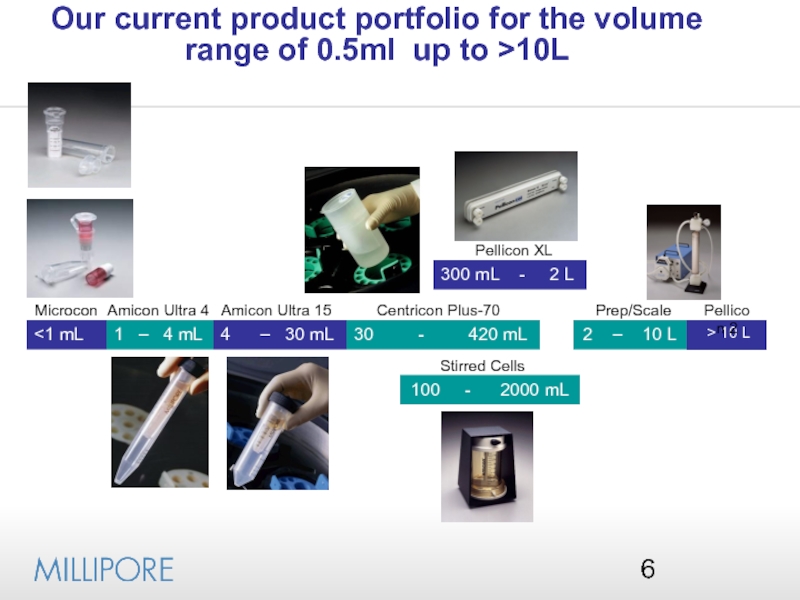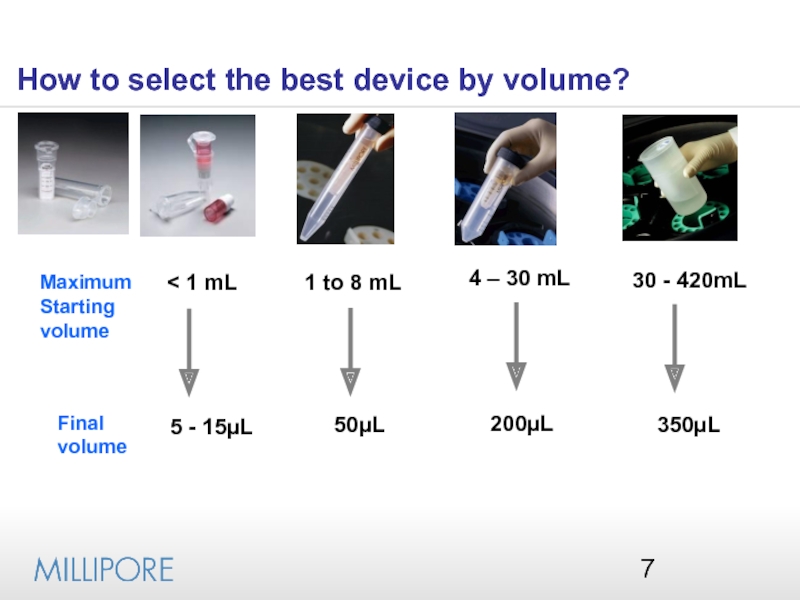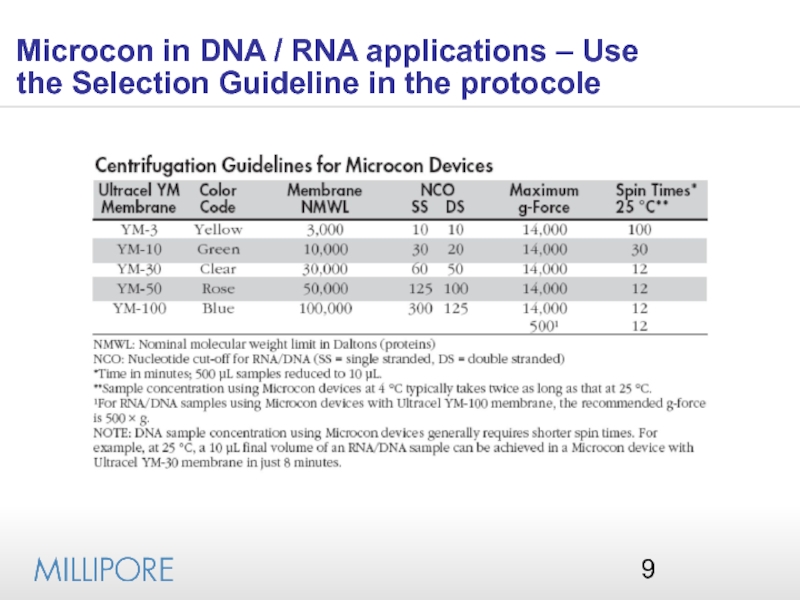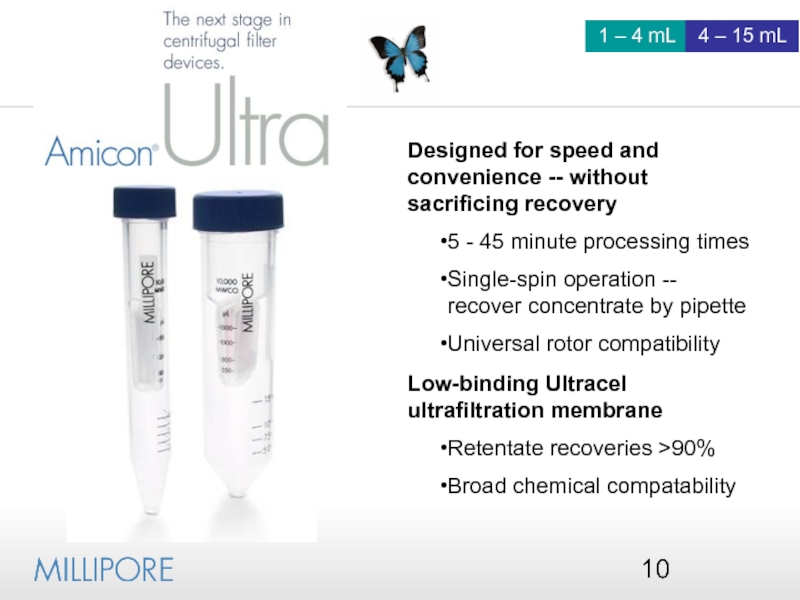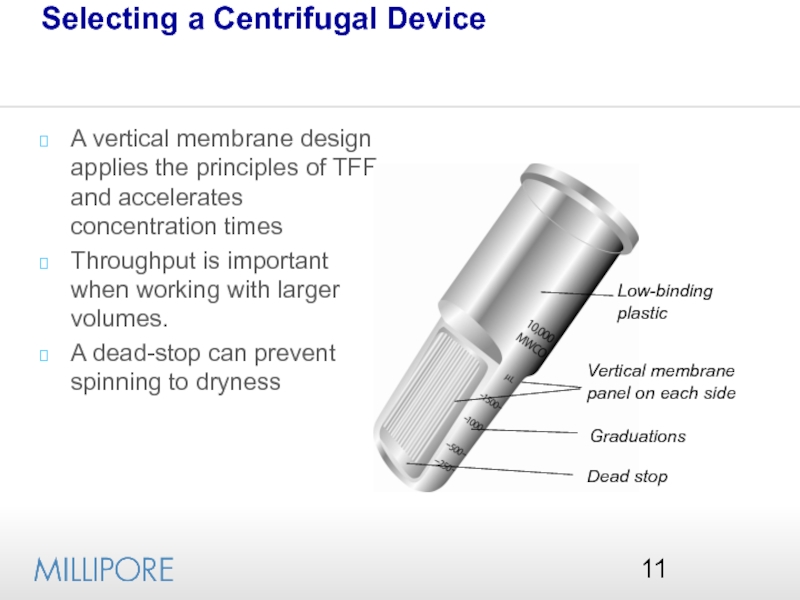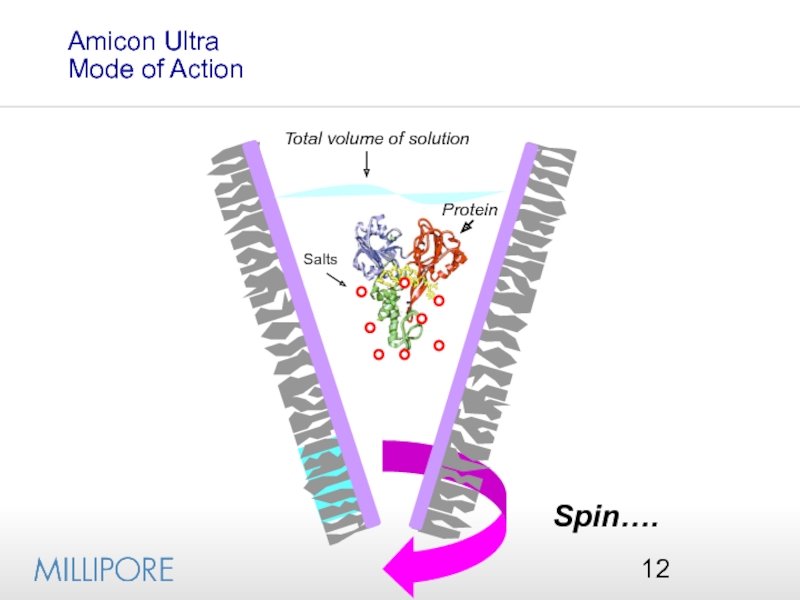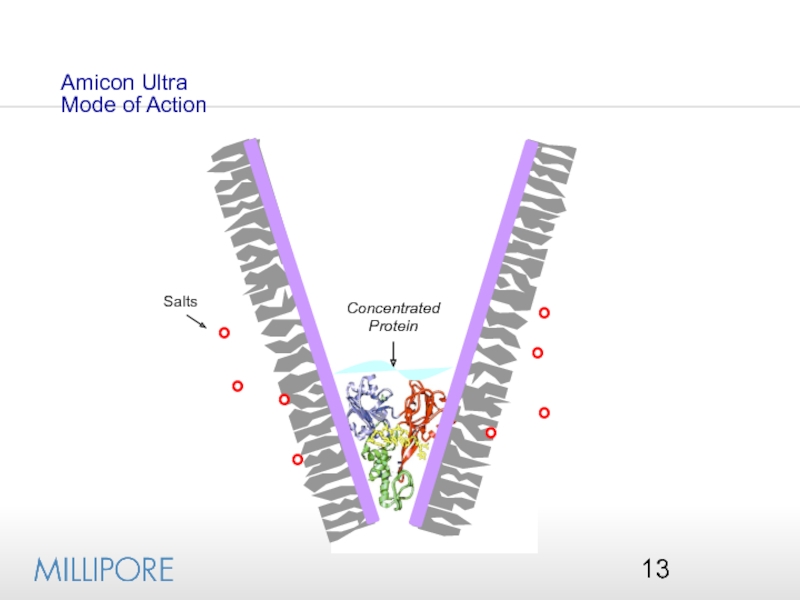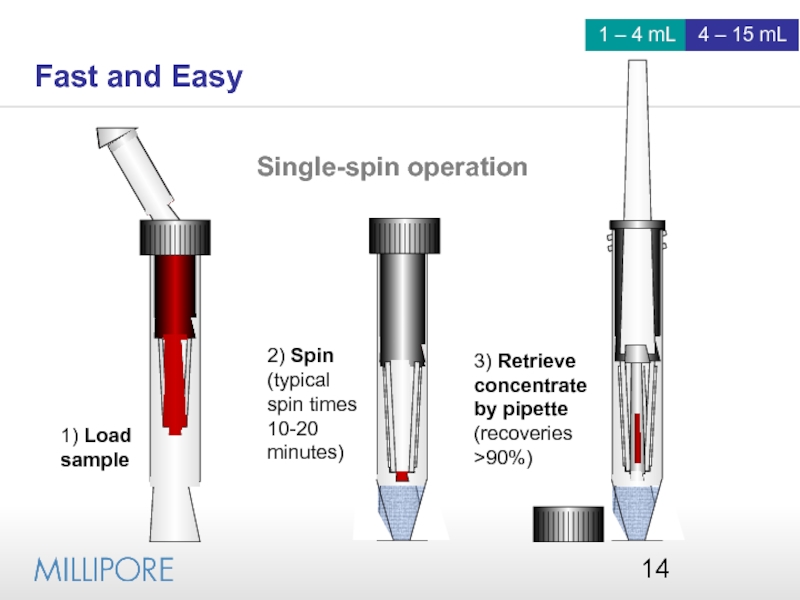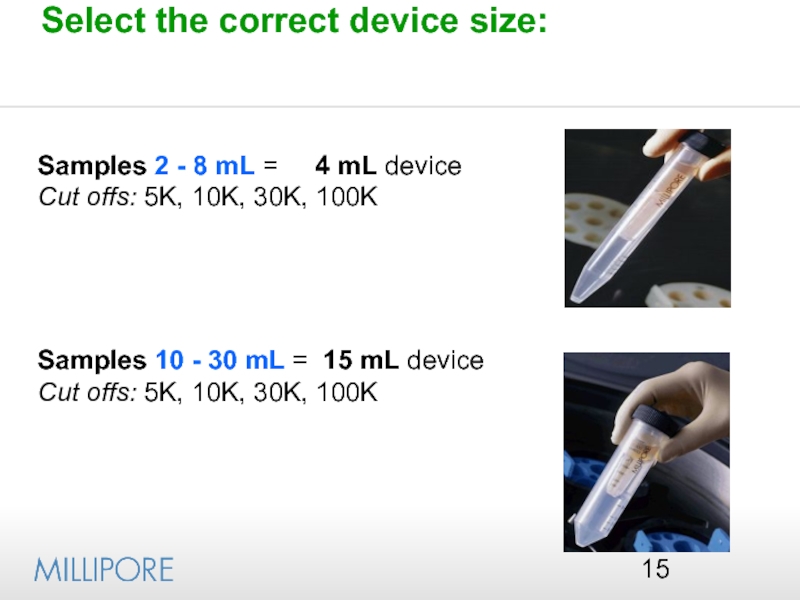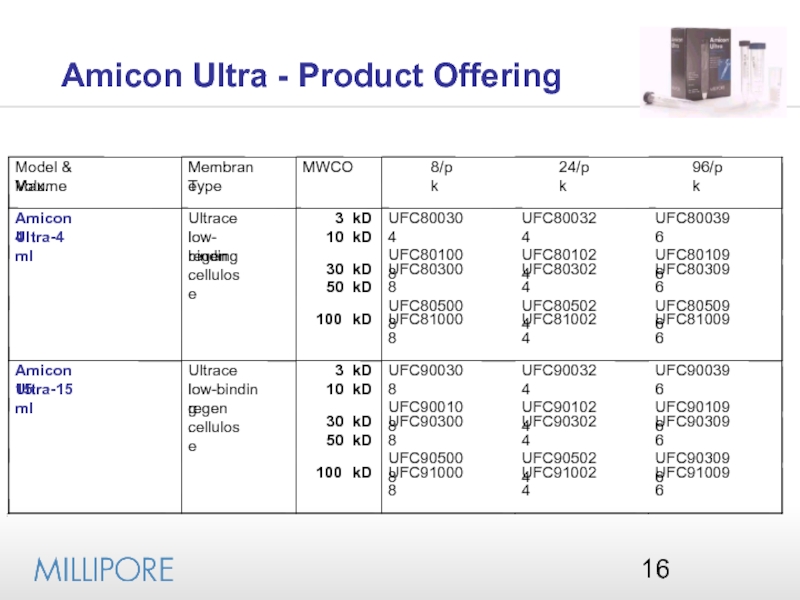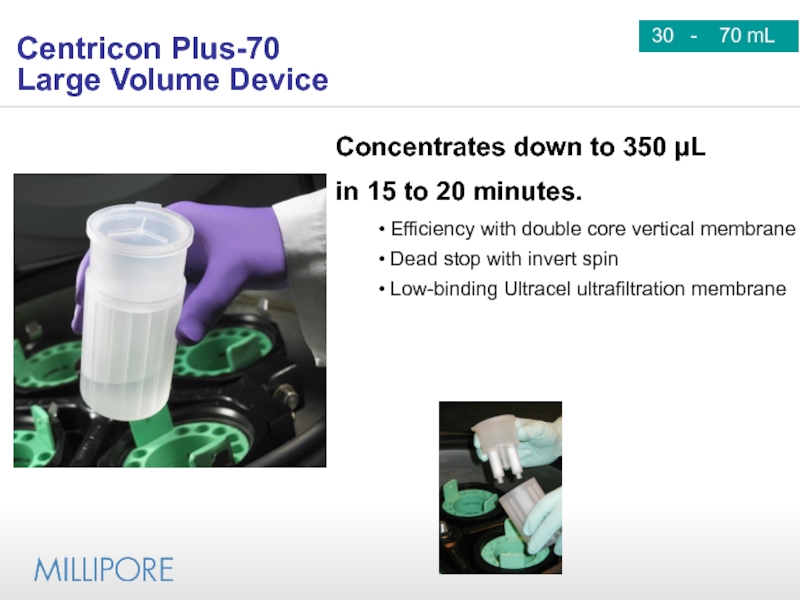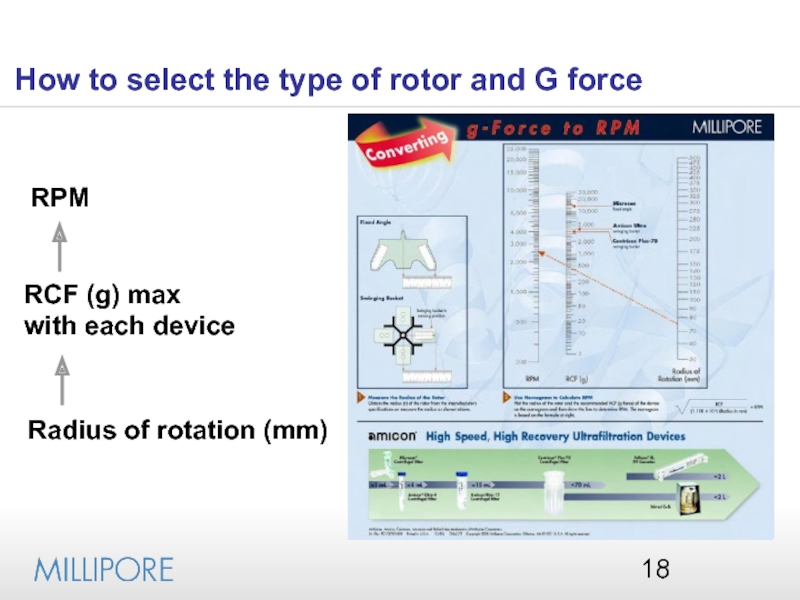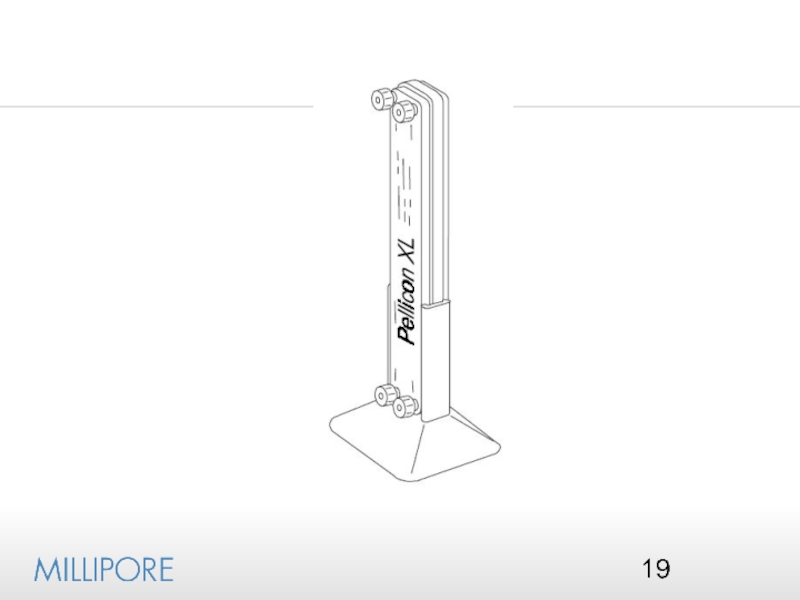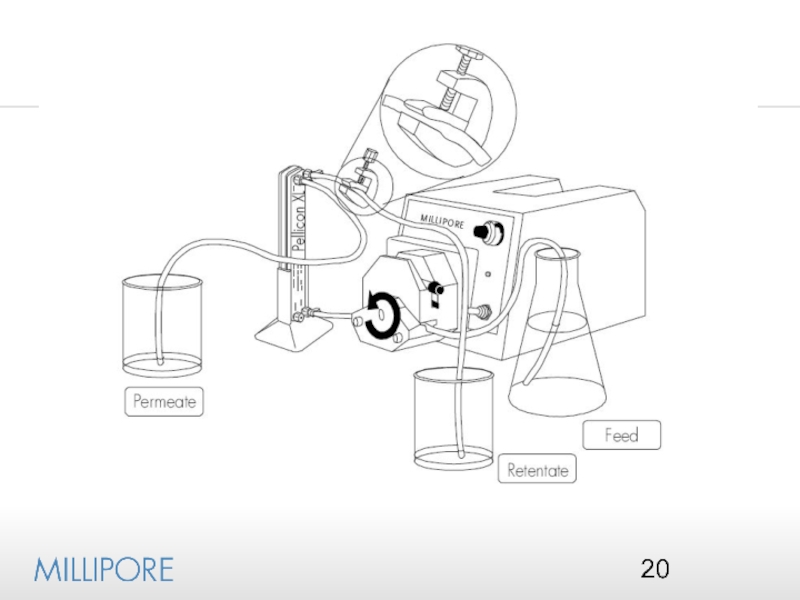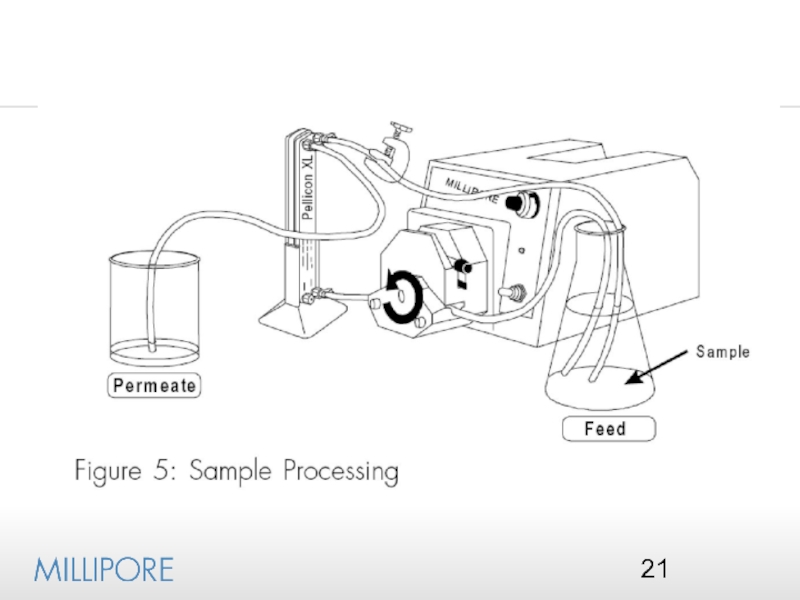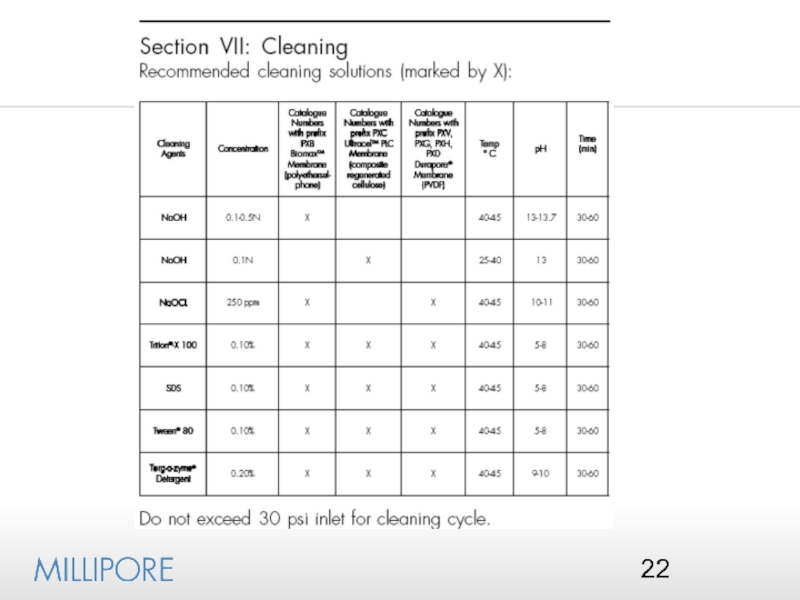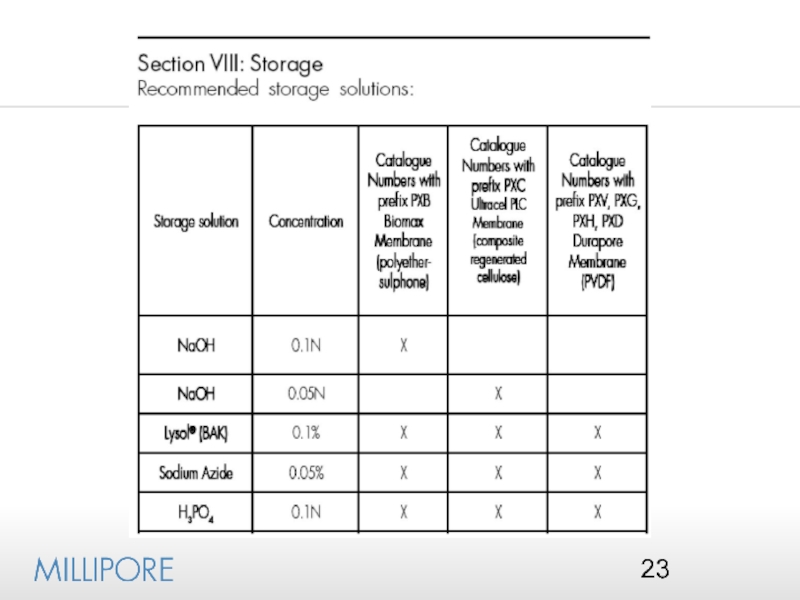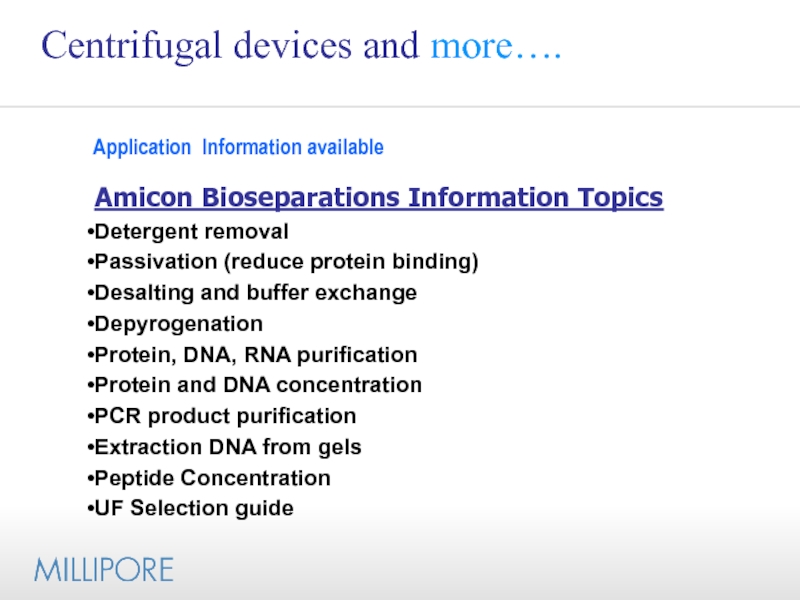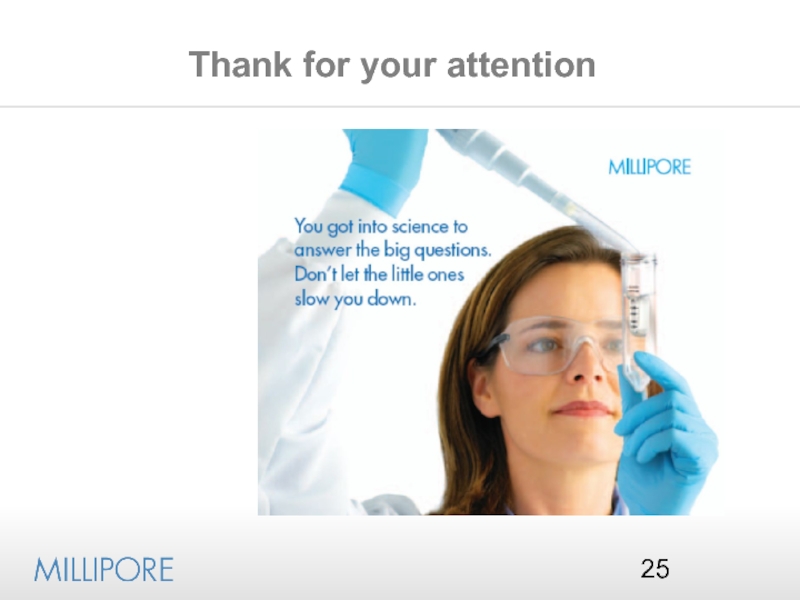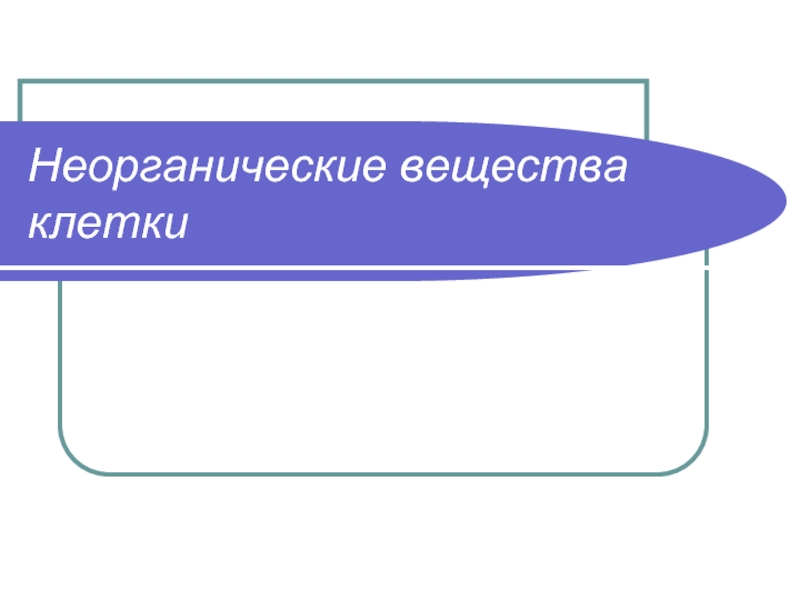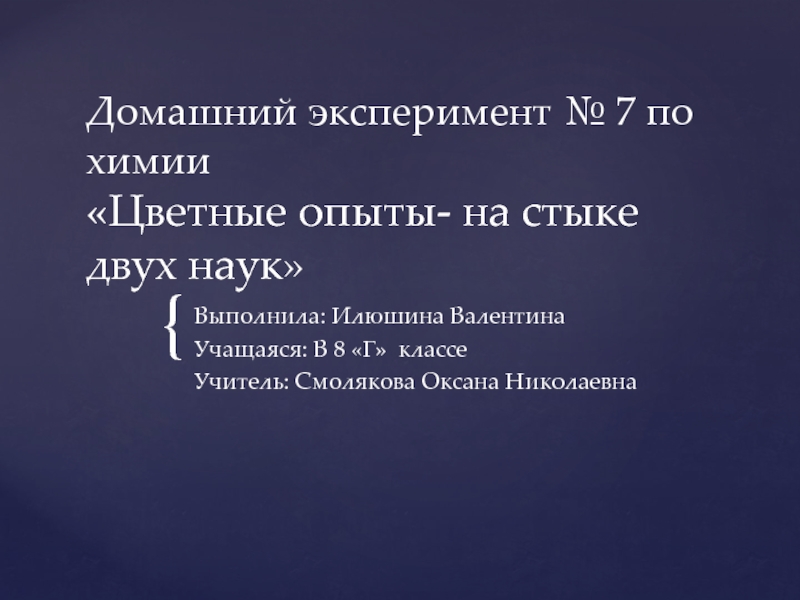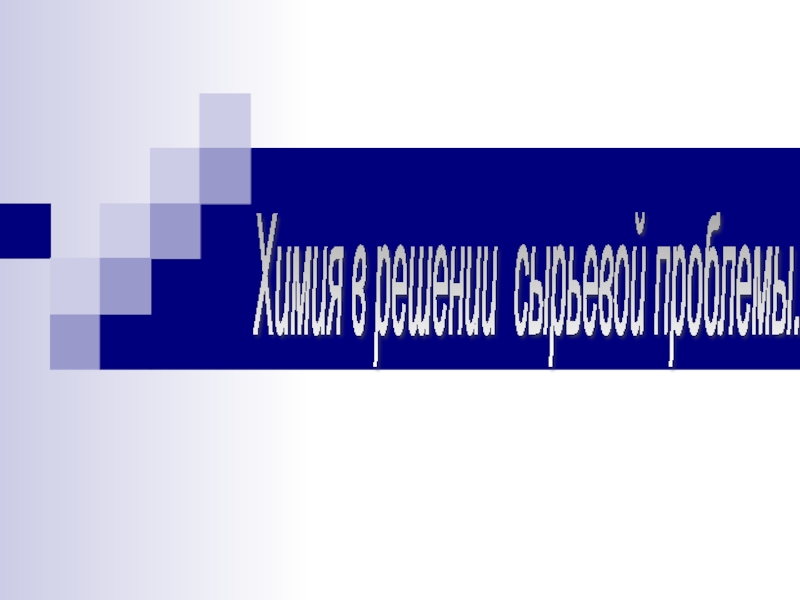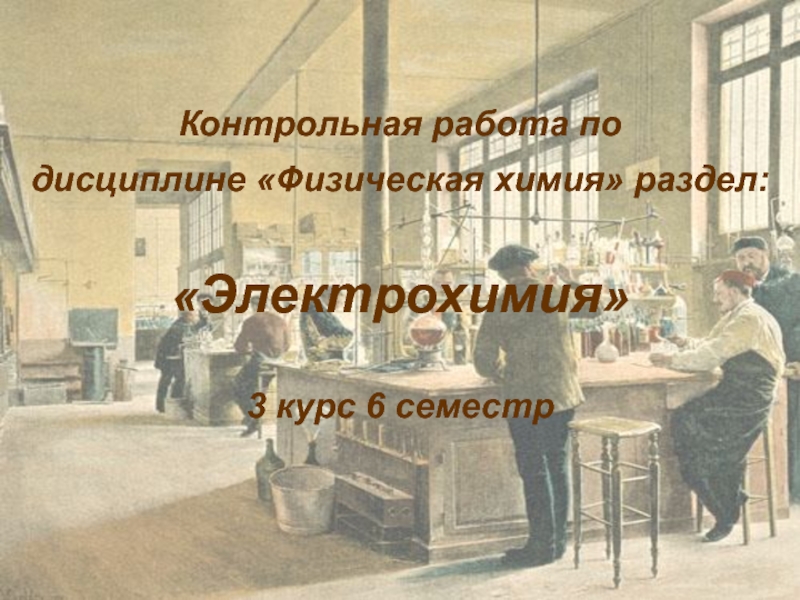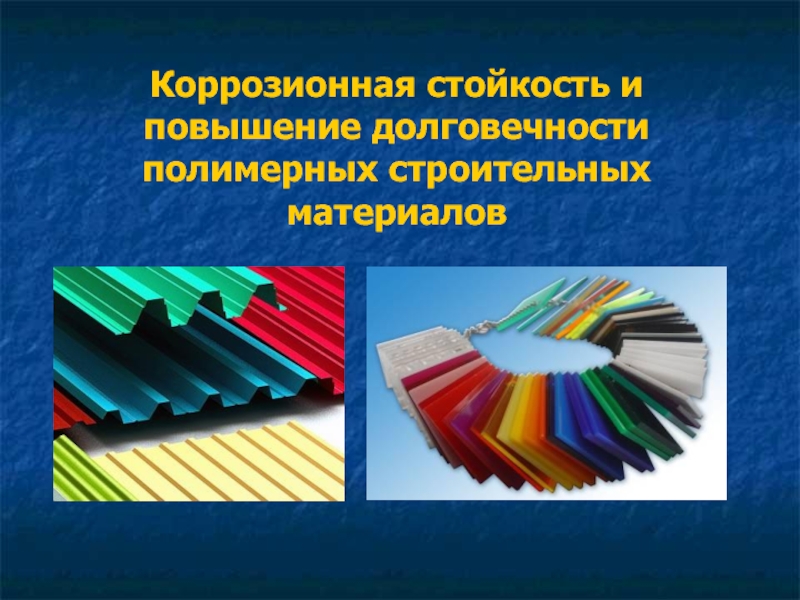- Главная
- Разное
- Дизайн
- Бизнес и предпринимательство
- Аналитика
- Образование
- Развлечения
- Красота и здоровье
- Финансы
- Государство
- Путешествия
- Спорт
- Недвижимость
- Армия
- Графика
- Культурология
- Еда и кулинария
- Лингвистика
- Английский язык
- Астрономия
- Алгебра
- Биология
- География
- Детские презентации
- Информатика
- История
- Литература
- Маркетинг
- Математика
- Медицина
- Менеджмент
- Музыка
- МХК
- Немецкий язык
- ОБЖ
- Обществознание
- Окружающий мир
- Педагогика
- Русский язык
- Технология
- Физика
- Философия
- Химия
- Шаблоны, картинки для презентаций
- Экология
- Экономика
- Юриспруденция
Centrifugal Ultrafiltration Devices презентация
Содержание
- 1. Centrifugal Ultrafiltration Devices
- 2. What is Ultrafiltration? A process for the
- 3. What is an Ultrafiltration Membrane? Structure of
- 4. The molecular weight and or composition
- 5. How do I select the most
- 6. 10 L Pellicon 2 Our current
- 7. Maximum Starting volume Final volume < 1
- 8. Microcon … the lab standard for small
- 9. Microcon in DNA / RNA
- 10. Designed for speed and convenience
- 11. Selecting a Centrifugal Device A vertical membrane
- 12. Spin…. Protein
- 15. Select the correct device size:
- 16. Amicon Ultra - Product Offering
- 17. 30 - 70 mL
- 18. How to select the type of rotor
- 24. Centrifugal devices and more…. Amicon Bioseparations
- 25. Thank for your attention
Слайд 1Centrifugal Ultrafiltration Devices for……
protein / nucleic acid concentration, desalting, buffer
Слайд 2What is Ultrafiltration?
A process for the separation and/or concentration of dissolved
Primary basis for separation is molecular weight/size
Driving force can be Centrifugal, Vacuum or Pressure
Слайд 3What is an Ultrafiltration Membrane?
Structure of Ultrafiltration Membrane
“Skin”
Porous
support
The UF ‘skin’
Ultracel® YM & PL regenerated cellulose
Dense top layer = ultrafiltration membrane,
Highly retentive
Lowest protein binding
Recommended for proteins; ideal for dilute proteins
Слайд 4
The molecular weight and or composition of the sample determines NMWL
The volume and required concentration level of the sample determines device selection.
The selected device determines the type of rotor and G force.
How do I select the most suitable device?
Слайд 5 How do I select the most suitable membrane (cut-off) for my
“Molecular Weight of Protein” divided by 2 or 3 = best cut-off of the ultrafiltration membrane
In this case, only the 10 kDa membrane will provide
optimal recovery.
Example:
For a 35 kDa protein, the two potential
membrane choices are 10 kDa or 30 kDa NMWL.
Слайд 6
30 - 420 mL
2 – 10 L
300 mL - 2 L
100 - 2000 mL
Microcon
Stirred Cells
Centricon Plus-70
Prep/Scale
Pellicon XL
Amicon Ultra 15
Amicon Ultra 4
> 10 L
Pellicon 2
Our current product portfolio for the volume range of 0.5ml up to >10L
Слайд 7Maximum
Starting
volume
Final
volume
< 1 mL
1 to 8 mL
4 – 30 mL
30 - 420mL
5
50µL
200µL
350µL
How to select the best device by volume?
Слайд 8Microcon … the lab standard for small volumes
High recovery design
Regenerated
low binding
highly retentive
High recovery
Invert spin concentrate recovery
Low binding materials and o-ring seal
Final conc. Volume 5 - 15 µL
cut offs 3K, 10K, 30K, 50K, 100K
<1 mL
Слайд 10
Designed for speed and convenience -- without sacrificing recovery
5 -
Single-spin operation -- recover concentrate by pipette
Universal rotor compatibility
Low-binding Ultracel ultrafiltration membrane
Retentate recoveries >90%
Broad chemical compatability
Слайд 11Selecting a Centrifugal Device
A vertical membrane design applies the principles of
Throughput is important when working with larger volumes.
A dead-stop can prevent spinning to dryness
Graduations
Vertical membrane panel on each side
Dead stop
Low-binding plastic
Слайд 14
Single-spin operation
Fast and Easy
1) Load sample
2) Spin (typical spin times 10-20
3) Retrieve concentrate by pipette (recoveries >90%)
Слайд 15Select the correct device size:
Samples 2 - 8 mL =
Samples 10 - 30 mL = 15 mL device Cut offs: 5K, 10K, 30K, 100K
Слайд 17 30 - 70 mL
Centricon Plus-70
Large Volume Device
Concentrates down
in 15 to 20 minutes.
Efficiency with double core vertical membrane
Dead stop with invert spin
Low-binding Ultracel ultrafiltration membrane
Слайд 18How to select the type of rotor and G force
RPM
Radius of
RCF (g) max
with each device
Слайд 24
Centrifugal devices and more….
Amicon Bioseparations Information Topics
Detergent removal
Passivation (reduce protein binding)
Desalting
Depyrogenation
Protein, DNA, RNA purification
Protein and DNA concentration
PCR product purification
Extraction DNA from gels
Peptide Concentration
UF Selection guide
Application Information available
